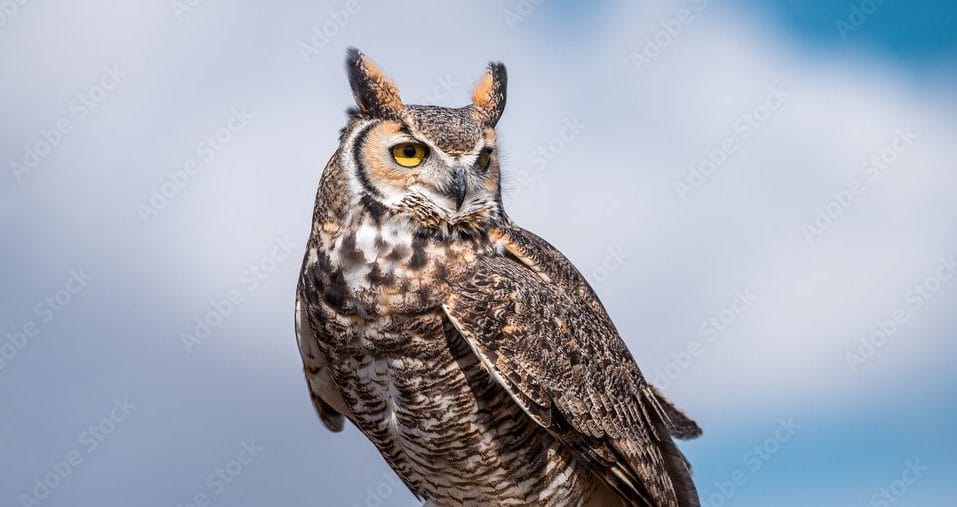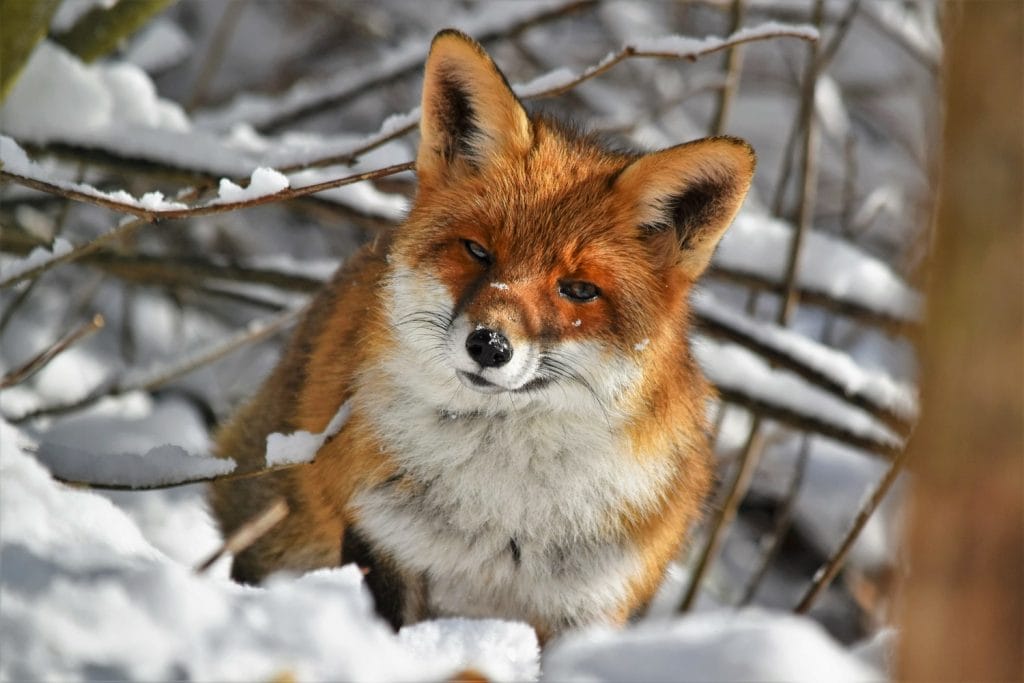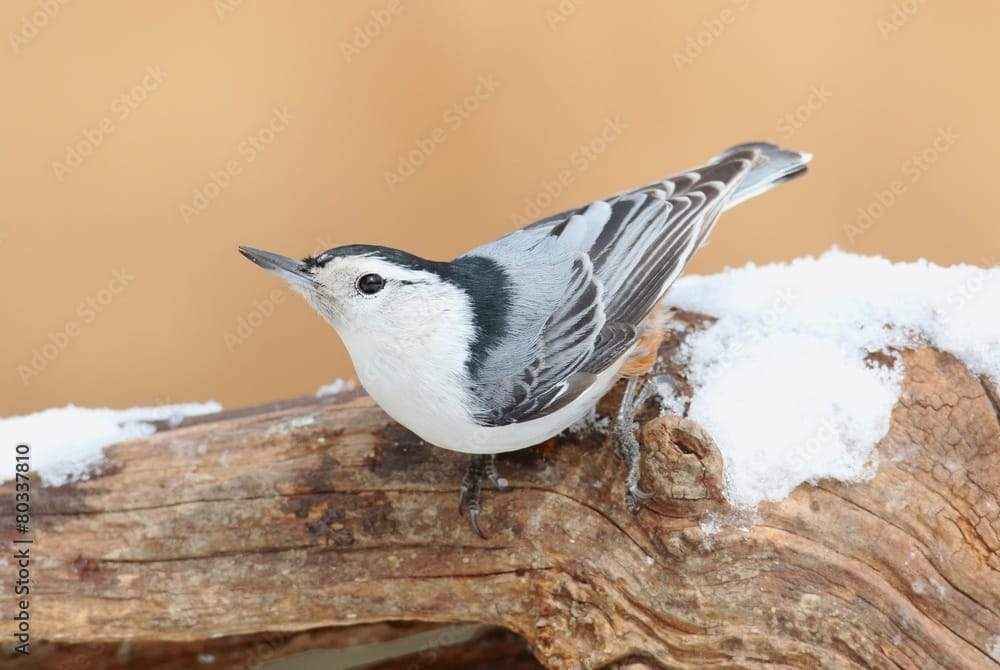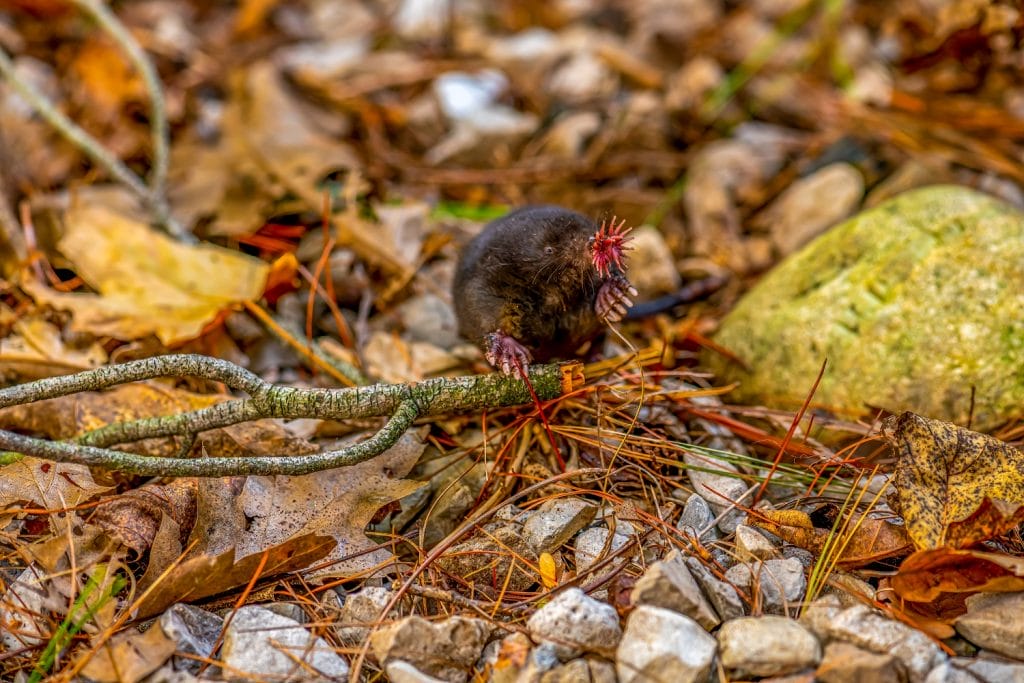Do owls have eyes in the back of their heads?
When you see a motionless owl looking straight behind itself, you might think that it could turn its head completely around. So…can it?
No animal, including the owl, can swivel its head in a full circle without risking a broken or twisted neck. Like all birds of prey, however, an owl can turn its head through 270 degrees…or about three-quarters of a full turn in each direction. This amazing ability arises from the fact that these creatures have a particularly flexible neck. Because the eyes of birds of prey are fixed, the birds can’t move their eyes up and down or from side to side the way we can.
What’s more, in comparison with buntings, pigeons and ducks, which have their eyes located on the side of their heads, birds of prey have their eyes located on the front of their heads, which gives them a significant zone of binocular vision.
The eyes cover, in fact, a 110° visual field and a binocular field of 70°; in comparison, a pigeon has a 340° visual field and a binocular visual field of only 25-30°. The placement gives birds of prey a tridimensional view of what they’re looking at and allows them to better appreciate distances while simultaneously keeping their prey in sight.
It’s a real advantage in terms of capturing a moving target. But it keeps them from having good rearview vision unless they turn their heads. In contrast, pigeons and ducks can eat in peace while keeping an eye on their surroundings without having to turn around.
The owl’s exceptionally flexible neck largely compensates for the fact that its eyes are fixed and its visual field reduced. That flexibility allows the bird to see all around itself by turning its head without moving the rest of its body. “Don’t try this at home,” however: you’ll risk a painful wry neck.
More from this author by clicking on his photo below.


Jacques Prescott131 Posts
Jacques Prescott est biologiste, professeur associé à la Chaire en éco-conseil de l’Université du Québec à Chicoutimi. Spécialiste de la biodiversité et du développement durable, il est l’auteur de nombreux livres et articles sur la faune et la conservation de la nature. Il nous fait l’honneur de rejoindre notre équipe de collaborateurs et signera chaque mois une chronique intitulée Faune et flore. / Jacques Prescott is a biologist, associate professor with the Chair in Eco-Counselling of the Université du Québec à Chicoutimi. A specialist in biodiversity and sustainable development, he is the author of numerous books and articles about wildlife and nature conservation. He has honoured us by joining our team of contributors and will write a monthly column entitled Wildlife and Habitat.












0 Comments